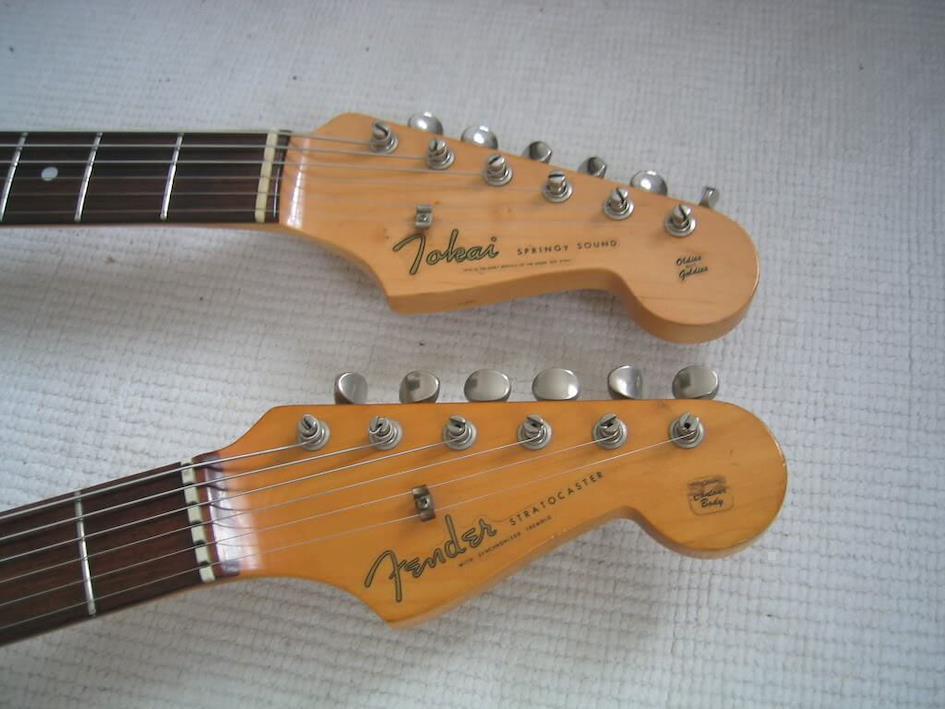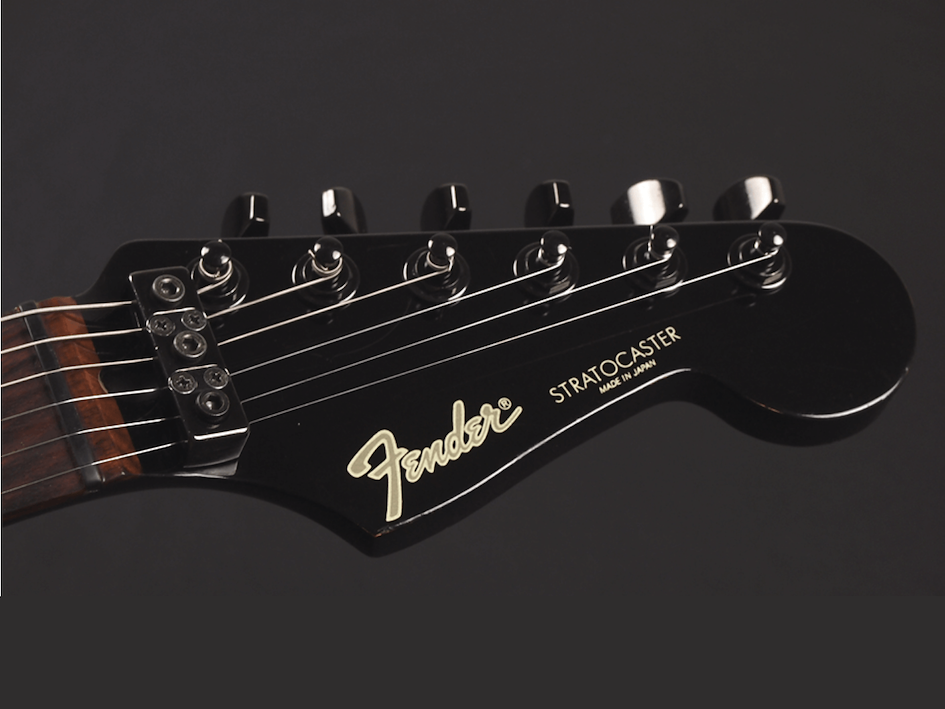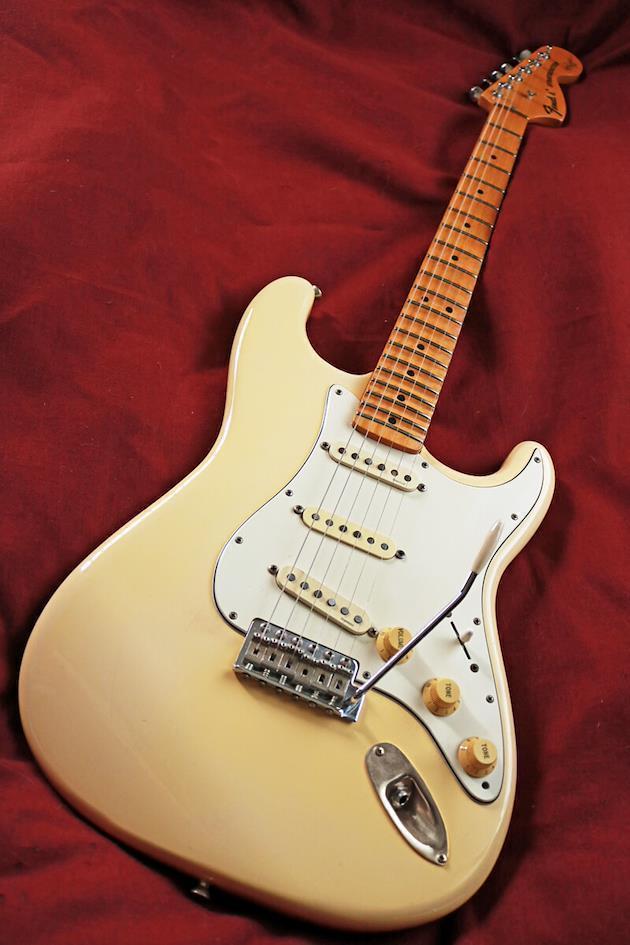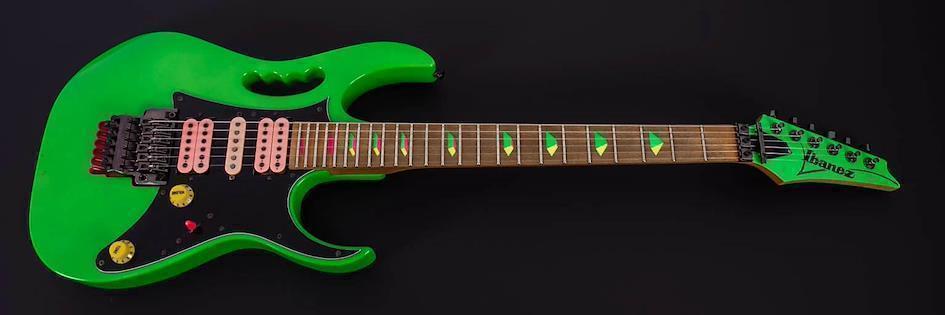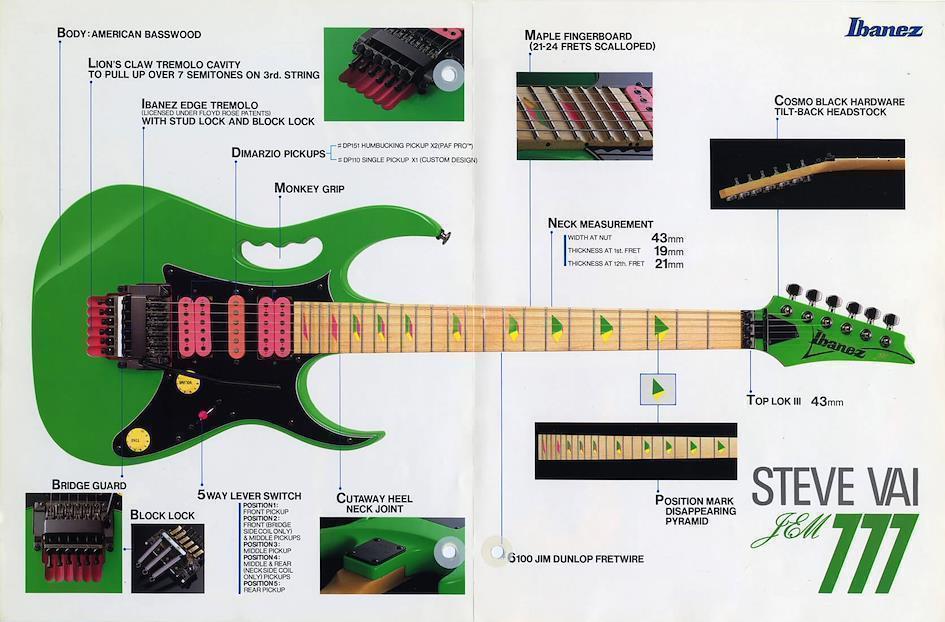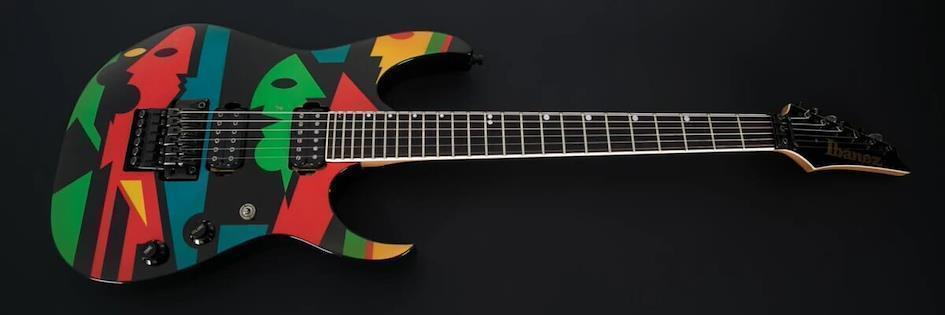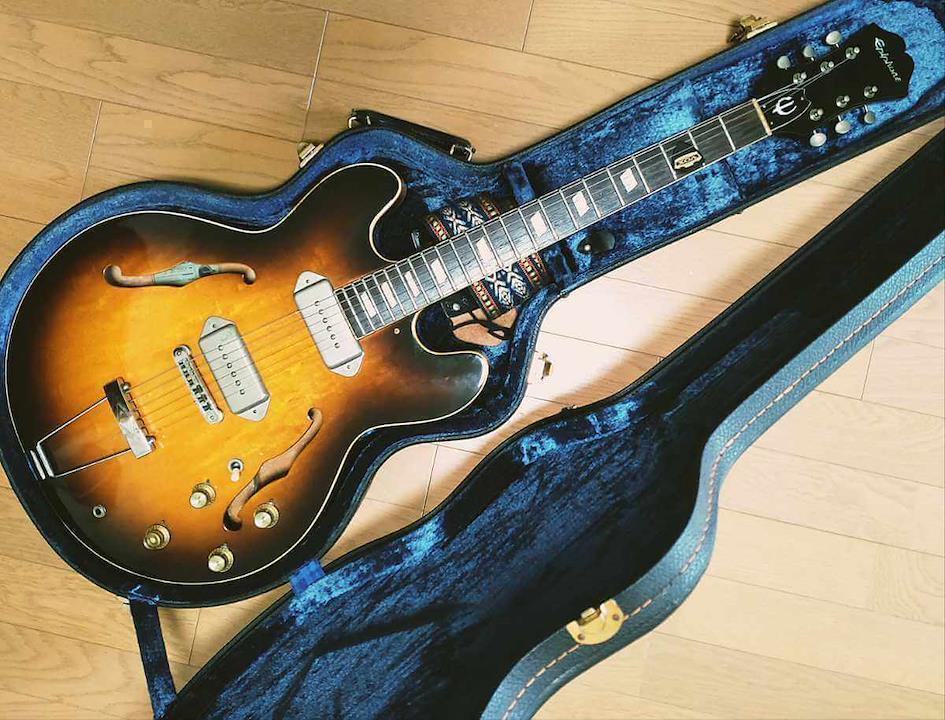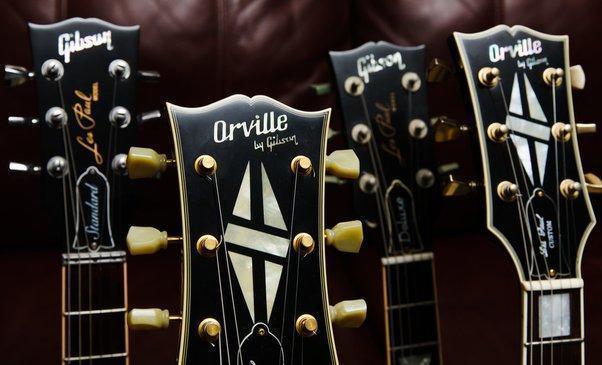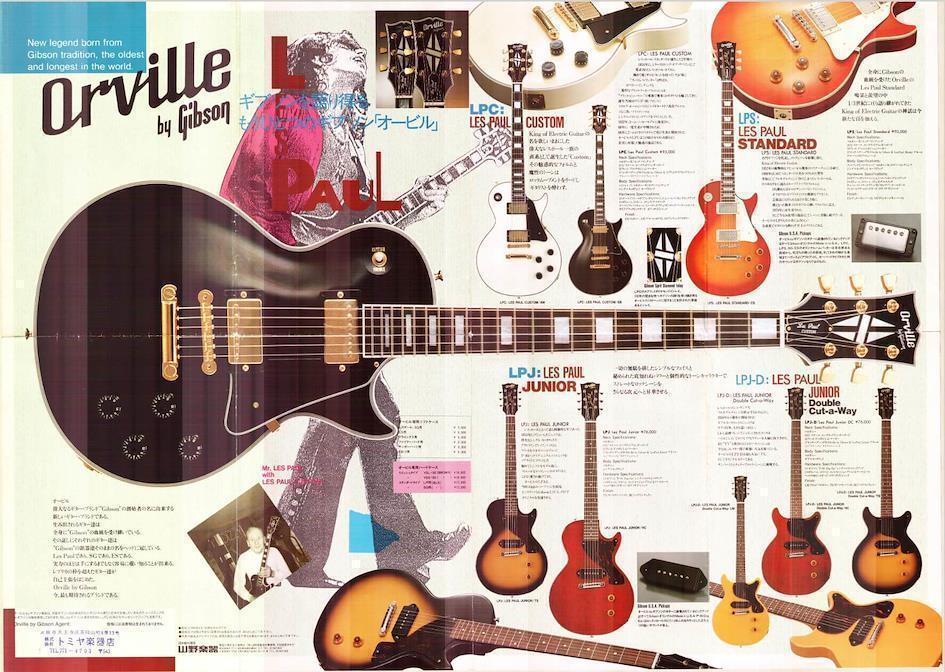[ad_1]
Japan is well-known for being one of the top electric and acoustic guitar manufacturers. Many of today’s well-respected guitar brands, such as Ibanez and ESP, make their highest-end models in their Japanese factories. Given the reputation of Japanese luthiers, it makes sense why vintage Japanese guitars are highly sought after by collectors, enthusiasts, and professional musicians alike.
Also Read: How To Order Musical Equipment From Japan
However, there are many reasons why vintage Japanese guitars are so special. These include Japan’s history of making copy guitars that took the American guitar market by storm. Japanese-made signature instruments and collaborations with American brands in the 1980s and 1990s have also solidified Japan’s place as a top manufacturer of guitars.
In this article, we will discuss some of the most well-known vintage Japanese guitars. Some guitars we will discuss are extremely important in defining music and guitar-making/designing history, hence demand a high collector price tag. Other guitars mentioned in this list are considerably more affordable and are great for guitar players hunting for great playing and high-quality vintage guitars.
Shop Vintage Guitars from Japan
Lawsuit-Era Guitars (Greco, Tokai, Edwards, Burny)
Back in the 1970s, Japanese guitar manufacturers started copying the designs of popular American guitar brands. Iconic models, such as the Gibson Les Paul, Gibson SG, Gibson Flying V, Gibson Explorer, Fender Stratocaster, and Fender Telecaster, started getting unlicensed copies from Japanese brands.
Unlike many of today’s guitar brands that “borrow” some elements from these classic instruments, most, if not all, of the popular vintage Japanese guitars directly copied American guitars. Multiple elements were copied, such as the body shape and headstock design. Only the name on the headstock was different.
However, the catch is that most of these guitars were extremely high-quality instruments that rivaled their American counterparts. In fact, American brands started losing sales when these Japanese companies started exporting their guitars.
Naturally, American guitar brands weren’t very happy. The story goes that Gibson’s parent company filed a lawsuit against Ibanez (Hoshino Group), who was copying Gibson’s signature “open-book headstock” design. Other companies, such as ESP, also faced lawsuits from Gibson.
Also Read: JAPANESE TRADITIONAL MUSIC INSTRUMENTS
These Japanese guitar brands were forced to either stop selling those specific guitar models or alter them significantly. Eventually, these Japanese copy guitars became known as “lawsuit-era guitars”.
Many of these lawsuit-era guitars have become valuable, especially for guitar collectors. Some of the most popular lawsuit-era Japanese guitars include the Tokai Love Rock (Les Paul clones), Tokai Silver Star (Fender Stratocaster Clone), Edwards Limited (Les Paul Clone), Burny Guitars (Multiple Gibson guitar copies), Greco (Gibson and Fender guitar clones), Ibanez (Les Paul copies), and ESP (Gibson style guitar copies).
Interestingly, many of the lawsuit-era guitars became big brands. ESP and Ibanez, for instance, later made their own original designs and are currently two of the biggest Japanese guitar manufacturers. Other brands, such as Greco, helped pave the way for Fender Japan in the 1980s.
But with that said, most of these lawsuit-era brands no longer manufacture Gibson or Fender-style guitars. Most have moved on with selling their original designs. That is why many guitar collectors, gigging musicians, and enthusiasts are hunting down lawsuit-era guitars.
Also Read: How To Buy Vinyl Records From Japan
Some guitars, such as the Tokai Love Rock and ESP MX220, have gone up in value. The ESP MX220 Explorer-type guitar, in particular, is now extremely expensive. It is best known as James Hetfield’s main guitar during the late 1980s and early 1990s. It is now a collector’s item that commands thousands of dollars.
With that said, there are still many lawsuit-era guitars that aren’t widely recognized by the community, are less available, or are more obscure. With the quality and history of lawsuit-era guitars, they are certainly worth adding to any guitar player’s collection.
Fender Guitars
Fender Japan
During the 1970s, Fender guitars started losing sales from competing Japanese manufacturers. However, instead of filing lawsuits, Fender decided to go with a completely different route. The brand decided to start manufacturing guitars in Japan, given the lower manufacturing cost but high-quality guitars produced in the country.
In 1982, Fender Japan was established through the joint venture of Fender, Kanda Shokai (神田商会), Yamano Gakki (山野楽器), and Fujigen Gakki. Fujigen Gakki initially made Fender guitars from 1982 to 1995. These guitars had the “Made in Japan” stamped on the back of the headstock.
Eventually, Dyna Gakki took over production since Fujigen Gakki wanted to expand its operations. These later Japanese Fender guitars had the “Crafted in Japan” stamped on the back of the neck heel.
Unlike most Japanese Fender-style guitars (Stratocasters, telecasters, etc.) available at the time, Japanese Fender guitars were truly special since they weren’t copies. Aside from having accurate specs, these guitars had precision and high-quality manufacturing by Japanese luthiers.
Fender Japan produced many great instruments throughout the 1980s, 1990s, and 2000s. Some popular models include the ST-72 YM Yngwie Malmsteen signature guitar, the ST-52 1950s Stratocaster reissue, the ST-62 1962 Stratocaster reissue, and many more.
Whether you are a collector, hobbyist, or professional gigging musician, you simply can’t go wrong with the excellent craftsmanship of vintage Fender Japanese guitars. Fender Japanese guitars were positioned above Made in Mexico Fender guitars and could even rival the original Made in USA Fender guitars.
Shop Pre-loved Japanese Fender Guitars
Squier JV Series Stratocaster
Squier guitars are best known as the budget counterpart to Fender guitars. Today, Squier guitars are made in various Southeast Asian factories. However, Squier guitars were also made in Fender’s Japanese factory at one point.
The Squier JV series was the first Fender guitar model manufactured in Japan. These guitars were replicas/reissues of Fender’s 1957 and 1962 Stratocasters. The JV series can be identified by the large Squier logo and small Fender logo on the headstock and the serial number starting with JV.
The JV series guitars were considered great value guitars since they were made in the prestigious Fujigen Gakki factory that also made early modern Ibanez guitars. Given their unique history, odd branding, and premium craftsmanship, the JV series has become well-regarded guitars that are easily worth adding to any guitar player’s collection.
Ibanez Guitars
Ibanez Jem 777 (Steve Vai Signature Model) and RG550
Steve Vai is one of the most influential guitarists in the world. The guitar virtuoso has played with big names, including Frank Zappa, David Lee Roth, and White Snake. Steve Vai has also had a very successful solo career that has inspired many of today’s guitar heroes.
In addition to his musical achievements, Steve Vai is also well-regarded for his contributions to modern guitar designs. Steve Vai was the first major Ibanez artist and was an influential figure in helping shape Ibanez into a successful guitar company.
Steve Vai’s signature guitars, the Jem and the Universe, are two of Ibanez’s most iconic guitars. The Ibanez Jem 777 was the first official guitar Ibanez built for Steve Vai. It had many unique elements, such as the monkey grip cutout and the lion’s claw bridge cavity. Many features of this guitar, such as Ibanez’s original Edge floating tremolo, HSH pickup configuration, and aggressive super-strat body shape, directly inspired future Ibanez guitars and superstrat designs from other companies.
The Ibanez Jem 777 was available in three colors: Desert Yellow, Lochness Green, and Shocking Pink. The Jem 777 was available from 1987 to 1996. The Jem 777 was reissued in 2017 for its 30th anniversary. The Ibanez Jem 777 is now considered a collector’s item that demands an extremely high price tag.
The Ibanez RG550, on the other hand, was meant to be a more affordable and stripped-down version of the Jem 777. It removed several key features of the Jem, most notably the monkey grip, lion’s claw tremolo cavity, and the Dimarzio pickups. What was left was a basic but still high-quality guitar.
The RG550 ended up becoming an equally important guitar to Ibanez. It became the template that inspired all of Ibanez’s modern RG guitars. Its well-regarded build quality also made this guitar the precursor to the company’s current Prestige Made in Japan guitars.
The original late 80s and early 90s Ibanez RG550 guitars were highly sought out by guitar players and collectors. To most guitar players, the original RG550 models were high-quality Japan-made guitars that had the price tag of lower-quality non-Japanese entry-level to mid-range guitars. However, the value of vintage RG550 guitars rose with the release of the RG550 Genesis reissue guitars.
Shop Japanese Ibanez Guitars Now
Ibanez JPM100 (John Petrucci Signature Model)
Guitar virtuoso John Petrucci is best known for his work in Dream Theater and Liquid Tension Experiment. Nowadays, John Petrucci exclusively uses the guitars he designed with Ernie Ball Music Man. However, many longtime fans will know that he started his career with Ibanez guitars.
The Ibanez JPM100 was John Petrucci’s signature guitar produced from 1995 to 1999. It was very similar in terms of specifications to other Ibanez guitars at the time. However, its Picasso-inspired graphics, three-way pickup selector switch, and smaller and rounder neck profile made it stand out from Ibanez’s other offerings.
The JPM100 was available in four finishes: JPM100 P1, P2, P3, and P4. Each design had a different color variant of the same Picasso-inspired finish. Since John Petrucci left Ibanez at the end of the 1990s, the Ibanez JPM100 guitars have become valuable for Dream Theater/John Petrucci fans and collectors.
This guitar is considerably more expensive than many discontinued vintage Ibanez standard models and signature guitars. However, it is a truly one-of-a-kind instrument that is an important piece of progressive metal and Dream Theater history.
Shop Japanese Vintage Ibanez Now
Ibanez SC500N
The SC500N was Ibanez’s nylon/classical guitar introduced in 1998 as part of Ibanez’s S Classical series. It was a unique guitar in Ibanez’s catalog that featured nylon strings and piezo pickups. Unfortunately, it was a flop in the guitar market, especially with its high price tag. After just two years in the market, the SC500N was discontinued.
The Ibanez SC500N recently made a resurgence thanks to Polyphia guitarists Tim Henson and Scottie Lepage. According to Tim, he found the SC500N in a vintage guitar store while the band was on tour.
Later on, Tim’s SC500N inspired the song “Playing God” and led to the creation of Tim Henson’s signature Ibanez TOD10N guitar and its standard issue counterpart, Ibanez FRH10N. With how popular Polyphia’s style is right now, the demand for guitars similar to the SC500N is high.
And, of course, the Ibanez SC500N’s value in the used market has also risen. Given that it was only available for two years, it is certainly difficult to acquire today.
Gibson Guitars
Epiphone Japan and Orville
Most guitar enthusiasts know that Gibson guitars are exclusively made in the USA. Epiphone guitars, on the other hand, are more budget guitars made in Asian factories such as South Korea and China.
However, many guitar enthusiasts might not know that Gibson also ventured with Japan-made guitars in the 1980s and 1990s through Epiphone and Orville guitars. Epiphone guitars were originally made in America. But in the 1980s, Epiphone moved guitar manufacturing to Japan since labor costs were lower and Japanese luthiers had a good reputation.
In the 1980s, Matsumoku started manufacturing Epiphone guitars in cooperation with Gibson. Aria handled the production and distribution. The earliest Japanese Epiphone models produced were rebranded Matsumoku guitars.
They were also exclusively sold in Japan. Through the years, Epiphone Japan started incorporating original Epiphone models, such as the Wilshire, Emperor, Riviera, and Newport bass.
Shop Japanese Gibson Guitars Today
Orville Guitars
With the success of Japanese Epiphone guitars, Yamano Gakki decided to bring other famous Gibson-style models to the Japanese market. But instead of using the Epiphone brand, they decided to use a completely different brand name. They decided to call the new brand Orville guitars, named after Orville Gibson, the founder of Gibson guitars.
Under the Orville guitar brand, Gibson made officially licensed Japanese versions of iconic designs such as the Les Paul, SG, Explorer, Flying V, and many more. In addition, these guitars featured Gibson’s “open-book style headstock”.
Orville guitars utilized both Japanese-made and American-made pickups. Orville guitars that featured American-made pickups were branded as “Orville by Gibson”. Orville guitars ended in 1996 when Gibson and Yamano Gakki decided to export the Japanese Epiphone guitars to the international market.
Also Read: JAPAN-EXCLUSIVE ANIME COLLAB EARBUDS
In the 2000s, Epiphone Japan introduced the Elite series (later renamed the Elitist series). Essentially, these guitars were rebranded Orville guitars meant to be sold in the Japanese and international markets.
Epiphone Elite/Elitist models sold in Japan featured Gibson’s “open-book headstock”, while export models meant for the international market featured Epiphone’s usual headstock. The Elite/Elitist models were marketed as high-end Epiphone models.
Find Your Own Pre-loved Vintage Orville Guitar
These Japan-made Epiphone guitars featured significantly better parts and craftsmanship than the other Epiphone models manufactured in South Korea. Japan-made Epiphone guitars were later discontinued in 2009. The brand currently no longer produces any guitars in Japan.
Both Epiphone and Orville guitars are highly sought after by collectors and guitar players. They believe that these guitars are some of the best guitars Gibson/Epiphone made. Many even believe they are better than Epiphone guitars made today.
[ad_2]
Source link


